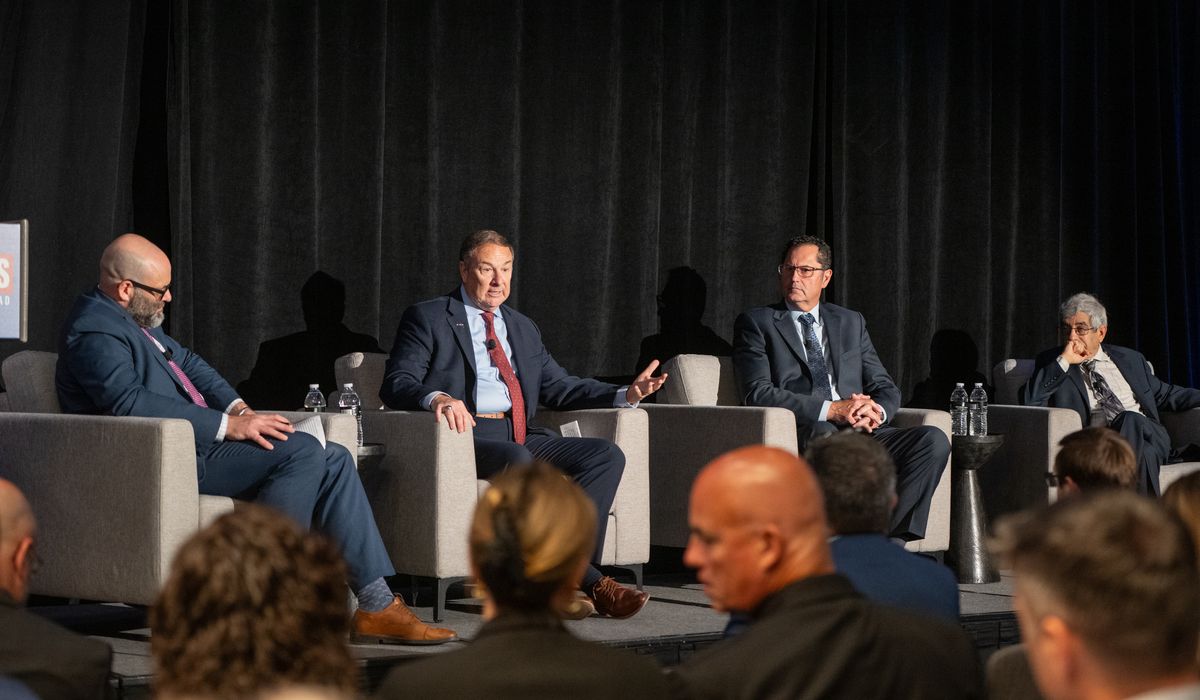


National Security Editor Guy Taylor moderates a panel discussion with Chris Bogdan, Lt. Gen. (Ret.), Executive Vice President at Booz Allen; Ed Zoiss, President of Space & Airborne Systems at L3Harris Technologies; and Dr. Mark Lewis, CEO of Purdue University Applied Research Institute. The discussion occurred during the “Golden Dome for America” event hosted by Threat Status on May 13, 2025, at the Ritz-Carlton, Pentagon City, in Arlington, Va.
[TAYLOR] President Trump signed his executive order on January 27 at the end of his first week in office declaring that the threat from next generation strategic weapons has become more intense and complex with the development by peer and near peer adversaries of next generation missiles and delivery systems.
The order called for the establishment of a new missile defense shield to protect the U.S. homeland. The title of the executive order was the Iron Dome for America, a reference to Israel’s Iron Dome missile defense shield. The Pentagon subsequently changed that nomenclature in February somewhat discreetly in an advisory to defense contractors that called it Golden Dome.
The period since has seen a lot said and written about what this Golden Dome could or should consist of technically, and there’s plenty of debate at this point.
Booz Allen has proposed a missile shield consisting of space-based interceptors capable of intercepting ballistic missiles early in the boost ascent and mid-course phases. Booz Allen has called this the “brilliant swarms satellite concept for missile defense.”
[BOGDAN] The current missile defense system is a layered system as we all know. And the executive order talks about wanting to defend against ballistic missiles, hypersonics, cruise missiles. I’m going to fundamentally talk about ballistic missiles. Any missile that’s shot from the ground that enters the exo-atmospheric realm is a place in which brilliant swarms can have an effect. The current system today is mainly made up of ground-based effectors in three layers.
…While this is a very capable system that we have today, what it cannot do is it cannot intercept and defeat ballistic missiles in their boost to send an early mid-course phase. You have to wait until those missiles are closer to the United States, more line of sight, and the worst part about waiting that long to intercept ballistic missiles like that is, they are past their boost phase, past their sent phase, and they are probably going to deploy countermeasures. And in many instances there are multiple warheads that are going to come out, making the problem for our ground-based interceptors that much more difficult.
So if you can figure out a way to intercept ballistic missiles early in their boost ascent phase, just as they’re coming past the atmosphere, you’re catching those missiles at their most vulnerable point because they’re still burning. They’re not releasing their countermeasures, and they have yet to deploy their multiple warheads. But this is a difficult problem and it is mainly a timing problem because you can’t put enough ground-based interceptors close enough to the launch point to catch those missiles in their boost and ascent phase that’s why a space -based constellation of small satellites that covers most of the earth or all of the Earth, or specifically, depending on the orbitology, can cover a particular region has the ability to intercept those missiles much, much earlier.
Watch the video to see the full discussion.
See more on ’Golden Dome for America’ from Threat Status at The Washington Times.
